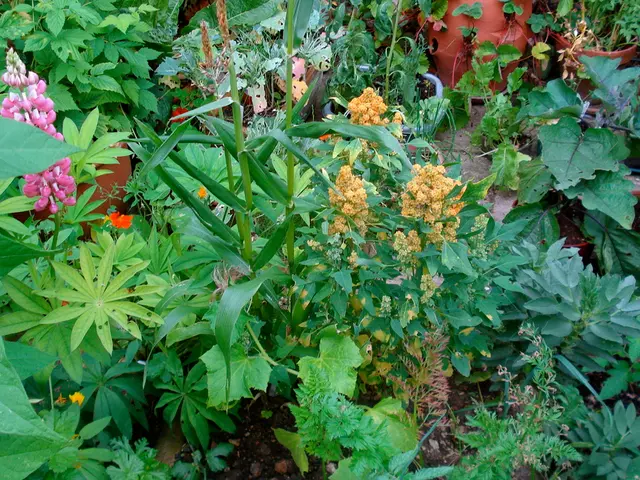Devising a Mistake-Free Irrigation System: Tips and Tricks for Efficient Watering
In the quest to maintain a lush, vibrant garden while conserving water and energy, an efficiently programmed irrigation system is essential. Here's a guide to help you set up and configure your irrigation controller for optimal results.
### Installation Best Practices
To ensure a reliable and efficient irrigation system, it's crucial to connect the controller securely to your irrigation valves and wiring, and power it via a dedicated outlet or battery as per the manufacturer's specifications. For professional results, especially in challenging climates, consider hiring a licensed professional to meet local codes, avoid repairs, and ensure warranty coverage.
### Programming and Configuration Best Practices
To achieve customized watering schedules, base your settings on your specific plant species, lawn size, soil type, and local climate conditions. Adjust watering durations according to soil moisture retention capacity and plant water requirements to prevent under- or overwatering.
Smart irrigation controllers that integrate with real-time weather data and soil moisture sensors can automatically adjust watering schedules based on current conditions like rainfall and evapotranspiration. Incorporate rain sensors or moisture sensors that pause irrigation during or after rain events to reduce water bills.
Seasonal adjustments are necessary, reducing irrigation during cooler, wetter months and increasing during dry, hot periods to reflect changing plant needs and environmental conditions.
### Additional Tips to Maximize Efficiency and Plant Health
Locate sprinkler heads and valves precisely to ensure water is delivered only where plants or lawn are, minimizing runoff and overspray. Regularly test and maintain your system for leaks, clogged nozzles, or misaligned sprinklers that can cause water waste or uneven coverage.
Refer to detailed programming guides for your model to correctly set time, zones, and schedules. For instance, tutorials are widely available for popular controllers like the Hunter X2 or WiFi smart controllers.
Implementing these steps ensures efficient water use, healthy plants without stress from over- or underwatering, and savings on water and energy bills. Smart controllers that dynamically adjust watering based on environmental data provide the best long-term efficiency and reliability.
Smart models of RainSensors come with a mobile app and real-time tracking. Zones, or sectors, correspond to solenoid valves and are the areas to be watered (lawn, beds, vegetable garden, hedges). Poor programming can lead to water waste, plant stress, and negative impacts on energy and money savings.
The irrigation controller is the heart of an irrigation system, automating the watering process and ensuring the right amount of water at the right time. Choosing a reliable technology is the first step towards optimal watering and improving the health of your garden.
Close or shared time slots should be avoided to prevent issues in the irrigation system. The control unit executes irrigation sequentially, opening and closing solenoid valves one by one, according to the defined order and programmed times. RainSensors have a "3-Easy-Steps" programming process with three essential data inputs.
Faucet-mounted controllers connect directly to an outdoor faucet, operating on batteries, and are ideal for small systems with an integrated solenoid valve. In-ground controllers are installed directly in the valve box with the solenoid valve, operating with a 9V battery and requiring proper positioning and moisture isolation. Wall-mounted controllers are fixed to the wall and connected to the power grid, requiring connection to equivalent voltage solenoid valves and testing each zone.
By following these best practices, you can create an efficient, cost-effective, and eco-friendly irrigation system that promotes plant health and reduces water waste.
To optimize your home-improvement project focusing on a home-and-garden setting, consider applying a smart irrigation controller to manage water use efficiently. In integrating it with real-time weather data and soil moisture sensors, you can customize watering schedules based on your lush garden's unique lifestyle requirements, thereby promoting plant health and conserving water and energy.








